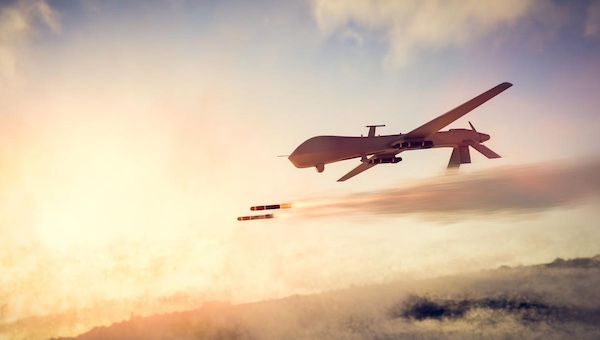
REPRESENTATIVE IMAGE - NISERIN/ISTOCK
US, TAIWAN TO BUILD 3D-PRINTED ‘DRONE ARMY’ TO COUNTER CHINA
BY: KAPIL KAJALORIGINAL SITE: INTERESTING ENGINEERING
3D-printed drone manufacturing can help reduce drones’ storage footprint by a factor of 10 at a lower cost of manufacture.
Learning from the Russia-Ukraine conflict, where inexpensive drones aided Ukrainian forces against Russian aggression, Taiwan plans to develop a similar ‘drone army’ using 3D printing technology to deter Chinese aggression towards the island.
The United States has played a pivotal role in Taiwan’s drone development. In June, the US pledged to sell $360 million of attack drones to Taiwan.
In the latest development, Virginia-based RapidFlight, an integrated aerospace design, development, and mass manufacturer of unmanned aircraft systems (UAS), has announced signing a memorandum of understanding with Taiwan drone manufacturer Thunder Tiger Group.
RapidFlight said in a recent press release that the companies will investigate using 3D additive manufacturing to manufacture unmanned systems for Taiwan’s National Defense and other commercial applications.
Boosting drone inventory
Taiwan’s Defense Ministry has recently proposed spending roughly $175 million to acquire approximately 3,200 drones from private contractors over the next five years.
The defense base in Taiwan will have to expand rapidly to meet that goal.
Consistent with appropriate licensing and governmental approvals, this partnership will leverage RapidFlight’s extensive understanding of additive manufacturing for aerospace applications at the tactical edge and Thunder Tiger’s technological know-how to enhance Taiwan’s defense and commercial UAS capabilities.
According to RapidFlight, additive manufacturing can help reduce the storage footprint of drones by a factor of 10 at a lower cost of manufacture while enabling a production line to integrate new drone capabilities quickly.
It enables swapping out payloads, propulsion systems, communications, and other critical components more readily to fulfill the user’s operational requirements or needs.
Thunder Tiger and RapidFlight envision bringing this capability to Taiwan to meet ever-evolving defense and security needs.
The partnership will also enable Taiwan’s Ministry of National Defense (MND) to explore RapidFlight’s customizable, scalable, and affordable autonomous aircraft manufacturing solutions.
Asymmetrical Warfare
To counter the Chinese threat, Taiwan is focusing on asymmetrical warfare strategy.
Asymmetrical warfare is designed to attack or exploit enemy weaknesses and disrupt enemy centers of gravity instead of taking on its strengths.
As a part, Taiwan has acquired Chien Hsiang anti-radiation unmanned aerial vehicles (UAVs) and Hsiung Sheng and Wan Chien standoff precision munitions.
The island also plans to acquire various types of UAVs to conduct intelligence, surveillance, and reconnaissance (ISR) and target acquisition missions and improve battlefield monitoring and reconnaissance capabilities against hostilities.
In addition, Taiwan is acquiring anti-UAV systems to defend against small UAVs’ progress toward the island and protect the homeland’s security.
The US is helping Taiwan develop such UAVs and will also deliver MQ-9B UAVs to extend the island’s ISR coverage and strengthen long-distance surveillance, reconnaissance, and early warning capabilities.
The US also plans to deliver command and control capabilities to Taiwan to boost the effectiveness of overall UAV and anti-UAV systems.
Military UAVs
To deal with hostile threats, Taiwan has reviewed the UAV requirements in all planned operational phases of the Armed Forces.
It also decided to delegate the R&D and production of 5 military-grade UAVs, including Teng Yun UAV, to the National Chung-Shan Institute of Science and Technology (NCSIST), which will integrate domestic industries to accomplish the mission.
Excluding the percentage involved in sensitive technologies, 80% of the UAV production will be outsourced to the industrial sector, and more than 700 military-grade UAVs are planned to be built from 2022 to 2028 as demanded by operational requirements from the services.
On the other hand, Taiwan has chosen contractors from domestic UAV industries to manufacture commercial-grade UAVs.
The development of five prototypes, including the “army-purpose UAVs,” has been completed.
AWFSM CATEGORIES
Activism | AI | Belief | Big Pharma | Conspiracy | Cult | Culture | Deep State | Economy | Education | Entertainment | Environment | Faith | Global | Government | Health | Hi Tech | Leadership | Politics | Prophecy | Science | Security | Social Climate | Universe | War
